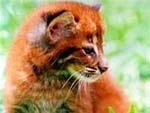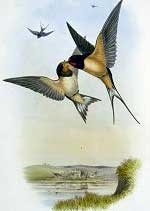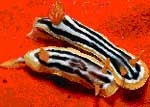A widely distributed snake species in Vietnam, known for its aggressive nature despite being non-venomous. This snake has excellent mouse-catching abilities, making it beneficial for agriculture.
Horse Snake – A Commonly Found Species in Vietnam
The snake mentioned above is the horse snake, also known as the striped snake or dragon snake, scientifically named Coelognathus radiata. This species belongs to the water snake family and is found across a range from India and Bangladesh to Southeast Asia, including Vietnam.
In Vietnam, this snake is distributed throughout the country, commonly found in lowland and midland areas, particularly in regions with abundant vegetation, bushes, or abandoned rodent burrows. The horse snake is an adept climber and can also be seen in bushes and sometimes on rooftops.

The horse snake is easily recognizable thanks to its distinctive patterns on its face and body (Photo: Dan Rosenberg).
An adult horse snake can grow up to 2 meters long. This species is easy to identify due to its body features. From its eyes, there are three small black stripes, two running diagonally down to the upper lip, and one running across the temples. The body has four black stripes running from the neck down past the middle of the body, with two larger continuous stripes in the center and two smaller, broken stripes on the sides.
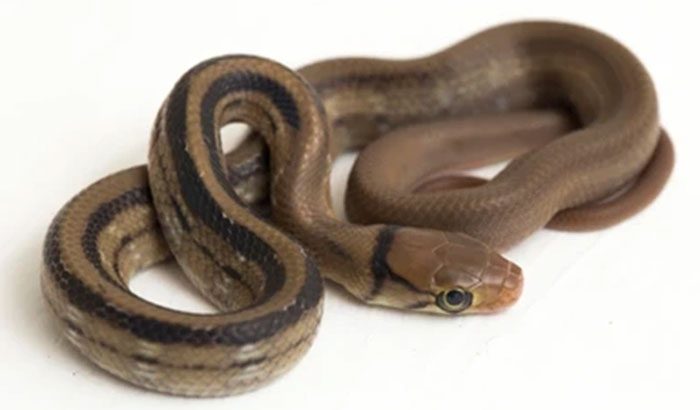
Distinctive patterns on the head and body of a young horse snake (Photo: Shutterstock).
Due to its wide distribution and diverse habitats, the horse snake is frequently encountered by humans, especially in areas with a high mouse population, which is the snake’s preferred prey. However, thanks to its recognizable features, people can quickly identify the horse snake for appropriate handling.
An Aggressive Yet Harmless Snake
Despite its name “horse snake,” this species belongs to the water snake family and is non-venomous, contrary to common belief that it is related to cobras.
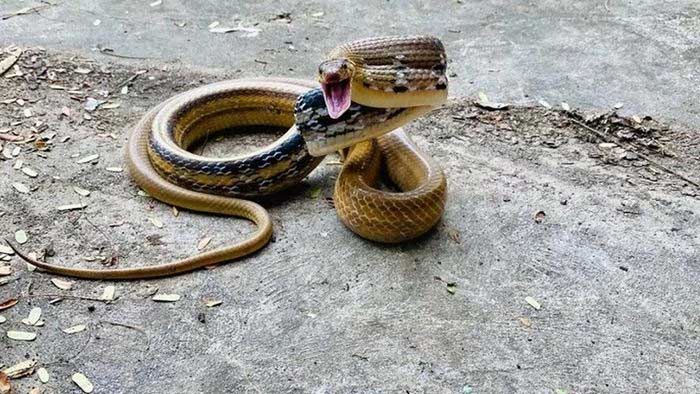
In a defensive posture, the horse snake raises its head high and opens its mouth wide in a threatening manner (Photo: Wild Forest).
Although it is non-venomous, the horse snake is an aggressive species that will attack first when it feels threatened. When in danger, the horse snake will raise one-third of its body off the ground, open its mouth wide, and attempt to puff out its neck skin while being ready to strike.
The horse snake often maintains its raised head and open mouth position to intimidate foes, leading many to mistakenly believe it is a deadly cobra. However, in reality, this snake is harmless to humans.
A bite from a horse snake may cause bleeding. If bitten, individuals should disinfect the wound thoroughly to prevent infection. Victims can treat themselves at home without needing medical facilities.
An Aggressive but Timid Snake that Plays Dead to Escape Predators
Despite its aggressive nature, often threatening enemies, the horse snake is, in fact, a rather timid snake.
If its threats fail and it cannot deter a predator, the horse snake will perform a dramatic “play dead” act. At this point, the horse snake will lie on its back, motionless, as if it is dead. Regardless of external stimuli, the horse snake remains still and does not react.
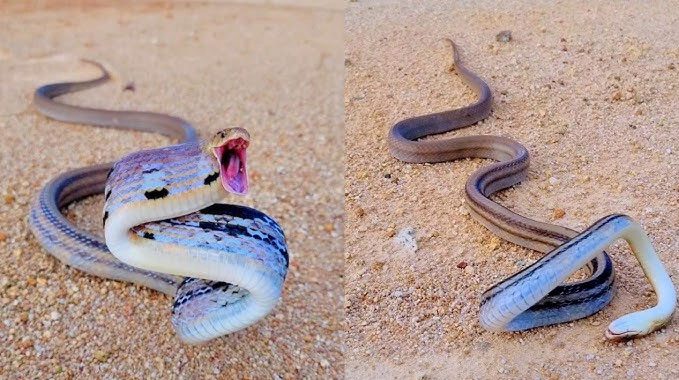
When the intimidation fails, the horse snake will “act” dead to deceive its enemy (Photo: Youtube).
Many predators tend to avoid eating dead animals, so the horse snake’s “play dead” act may help it escape from dangerous predators, including humans.
After lying still for a while and sensing that the threat has passed, the snake will flip over and quickly flee from the predator. However, if it is still being chased, the snake will continue its “play dead” act until it successfully deceives the enemy and escapes.
A Beneficial Snake for Farmers
Due to its widespread distribution, the horse snake often encounters humans. Because of its aggressive nature, the horse snake typically tries to threaten humans before fleeing, making it vulnerable to being killed if it crosses paths with people.

This snake has excellent mouse-hunting abilities.
The diet of the horse snake includes lizards, frogs, and occasionally fish and young birds. However, its favorite food is mice. The horse snake is skilled at catching mice due to its quick movement, making it a beneficial animal for agriculture.
Since the horse snake is harmless, easily identifiable, and beneficial for agriculture, if you encounter this snake, you can consider ways to safely relocate it rather than killing it.








































